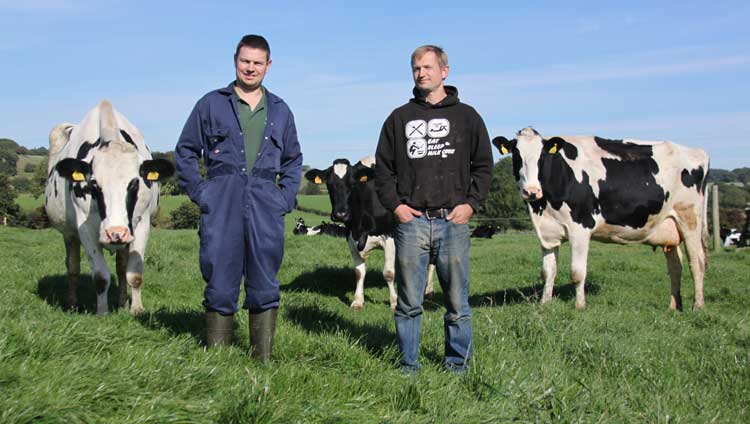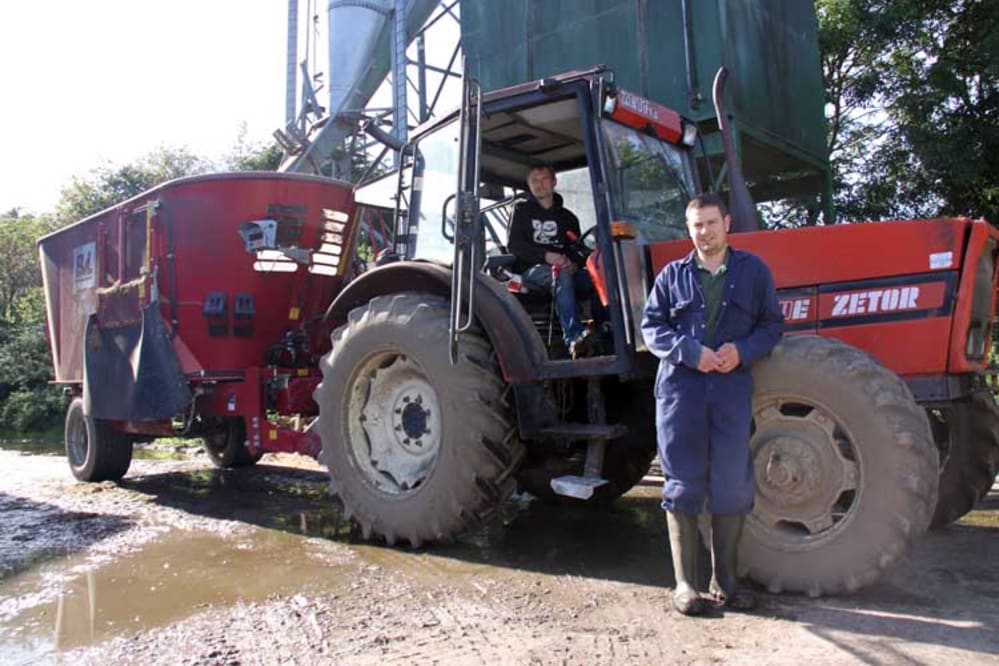Rumen maintenance key to maximising milk from forage for Yorkshire dairy herd
Published Tuesday, 18th October 2016
Maintaining rumen health and function through the use of a fast-acting, long-lasting buffer supplement is key to maximising milk produced from forage for the Studdah Herd in North Yorkshire.
Richard and James Pratt farm 200 acres at Studdah Farm, Bellerby, in North Yorkshire. The farm’s 130-strong pedigree dairy herd calves all year round and is milked twice daily, with a key focus being to produce as much milk from forage as possible.
An additional 150 youngstock are also raised at the farm, with heifers bred to calve at 23 to 24 months. “As well as producing milk for the Wensleydale Creamery, a large percentage of the farm’s income comes from selling freshly calved heifers,” James Pratt explains. “The value of the stock we sell relies heavily on the herd’s pedigree status and milk records, so it’s essential that we are able to maximise milk quality and components as well as quantity.”
Reducing production costs, maximising profitability
The Pratts work closely with their Carrs Billington feed sales advisor, Jim McRobert, to maximise the herd’s performance, paying particular attention to feed conversion rates as a means of reducing production costs and maximising profitability.
“We looked at our dairy ration eight years ago and decided that, in order to boost milk yields and increase constituent levels, we needed to make a few improvements in order to increase dry matter intake and to ensure the cows were getting enough energy,” Richard Pratt explains.
“We started growing our own wholecrop silage to reduce bought-in feed costs and increased energy intake and ration palatability by adding molasses. On Jim’s advice we also introduced Acid Buf at a rate of 65g/cow/day to reduce the effects of acid production in the rumen.”
The TMR dairy ration, which is fed all year, consists of grass silage, wholecrop silage, haylage or straw, a bespoke Carrs Billington blend, molasses, minerals and Acid Buf.
“The herd is still allowed access to fresh grass from April to October,” James adds, “but we don’t feed concentrates through the parlour. It’s therefore vital that the TMR diet is able to provide the herd’s remaining dietary requirements at the feed barrier.”
Keeping the rumen in good condition
The Studdah’s high yielders can eat up to 50kg per day of the TMR ration, with low yielders receiving up to 25kg. With such a huge intake, it is essential that the diet remains consistent, palatable and balanced and that the rumen is in good condition to process the entire ration.
“As we started to push for increased milk output, acidosis was starting to impact our yields,” James continues. “There was a noticeable difference in the overall demeanour of cows which were suffering from excessive acid, so we started using Acid Buf to neutralise the rumen pH and to create a more efficient rumen environment.”
Richard continues: “There’s no point putting large quantities of expensive feed in at one end of the cow for it just to come out of the other without getting the results in the middle. We needed to give the cows a more balanced, consistent diet and also wanted to improve our feed conversion efficiency so that the cows were both healthier and more profitable.”
The Pratts make two TMR mixes per day – to ensure the herd has access to the freshest ingredients – and simply spread half a bag of Acid Buf over a shear grab of silage and let the twin-tub mixer wagon do the rest.
“At less than three pence per cow per day, Acid Buf is an easy and a cost-effective way to maintain the optimum rumen pH,” Jim McRobert explains.
“Modern, high yielding dairy cows are often pushed to their extremes to produce as much milk as possible, so it is important to ensure they receive the necessary dietary components. The ability to convert that feed efficiently is a huge profit driver so we have focused on creating a ration which will enable the cows to utilise each kilo of feed as effectively as possible.”
The Studdah Herd’s TMR ration is mixed twice daily using a twin-tub feed wagon
The Studdah Herd, including first calvers, is currently achieving an average of 10,500 litres per lactation, with milk components of 4.07% butterfat and 3.22% protein. “Of this, 3,000 litres is produced from forage, with each animal consuming a phenomenal amount of dry matter,” Jim continues. “It is still a work in progress as we’re aiming to increase milk from forage and minimum constituents of 4.10% and 3.25%.”
“The inclusion of Acid Buf into the TMR ration is helping to achieve these goals by smoothing out the peaks and troughs in forage quality and encourages DM intake. It also provides a safety mechanism against over-gorging on starchy products by providing a fast-acting and long-lasting buffer to neutralise excessive rumen acid.”
Since adding Acid Buf to the TMR ration the Pratts have noticed a significant change across the herd. “The cows are quieter and more content, plus our milk yield and constituent values have improved,” James concludes. “It makes sense that if the cows are happy and healthy, they’ll have a longer and more productive working life. That’s key to our ongoing profitability, both in terms of the milk we produce and the youngstock we breed.”
Latest news
Stay ahead with the latest news, ideas and events.

Online Feed Fibre Calculator
Calculate the percentage of dietary fibre in your feed
Our calculator is designed for nutritionists and uses averages of global raw materials to calculate the dietary fibre content (plus other more in-depth fibre parameters) of finished animal feed. These parameters are available within AB Vista’s Dietary Fibre analysis service (part of our NIR service).
Sign up for AB Vista news
A regular summary of our key stories sent straight to your inbox.
SUBSCRIBE© AB Vista. All rights reserved 2025
Website T&Cs Privacy & Cookie Policy Terms & Conditions of Sale University IDC policy Speak Up Policy

























